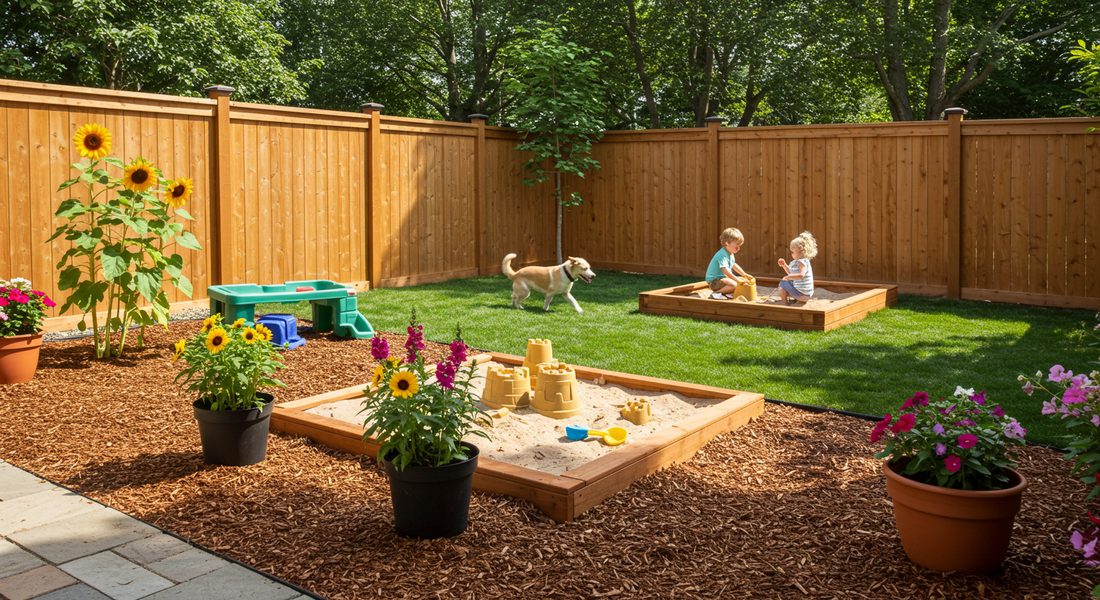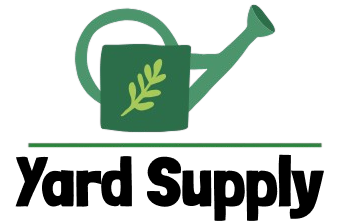
How to Create a Kid-Friendly and Pet-Safe Backyard: A Complete Safety Checklist
Share

Your backyard should be a sanctuary, a private oasis where every member of your family—including the four-legged ones—can play, relax, and enjoy the outdoors safely. Creating a space that's fun for them and worry-free for you is all about proactive planning. This complete safety checklist will guide you through the key areas of focus—plants, products, and structures—to help you build the perfect pet friendly backyard and kid safe garden.
Plant Safety
Many common and beautiful garden plants can be surprisingly toxic if ingested by curious children or pets. Knowledge is your best defense.
-
Common Toxic Plants to Avoid: Be aware of these popular but dangerous plants. Even a small amount can be harmful, so it's often best to remove them entirely if you have pets or small children. Some of the biggest culprits of plants toxic to dogs and kids include:
-
Lilies (especially toxic to cats)
-
Oleander
-
Sago Palm
-
Azaleas and Rhododendrons
-
Foxglove
-
Daffodils (especially the bulbs)
-
-
Beautiful and Safe Alternatives: You don't have to sacrifice beauty for safety! There are countless stunning plants that are non-toxic and durable enough to withstand a bit of rough-and-tumble play. Consider these alternatives:
-
Flowers: Sunflowers, Snapdragons, Zinnias, and Marigolds.
-
Shrubs: Forsythia and Rosemary.
-
Perennials: Catmint (a favorite for felines!), Hostas, and Coral Bells.
-
Product and Chemical Safety
A safe backyard goes beyond the plants. The products you use to maintain it are just as important.
-
Choose Pet-Safe Products: When shopping for fertilizers, pest controls, or ice melts, always read the label and choose products that are specifically marked as safe for use around pets and children. Many organic and natural options are available that are highly effective without the harsh chemicals.
-
Secure Storage is a Must: All garden chemicals, sharp tools (like shears and rakes), and fuel for lawn equipment should be stored in a securely locked cabinet or shed, completely out of reach of children and pets.
Structural and Area Safety
The physical structures in your yard are the final piece of the safety puzzle. Regular inspection and maintenance are key to backyard safety for kids.
-
Secure Fencing and Gates: A sturdy fence is the first line of defense in keeping your loved ones in and potential dangers out. Regularly inspect your fence line for any gaps, holes, or weak spots. Ensure that all gates have self-closing hinges and child-proof latches.
-
Pool Safety Measures: If you have a pool, multiple layers of safety are essential. This includes a separate, four-sided fence with a self-latching gate, a pool safety cover, and alarms on all doors and windows leading to the pool area.
-
Playset Inspection: Regularly check your playsets for any signs of wear and tear. Look for splinters on wooden structures, rust on chains or bolts, and any weak points in the frame.
-
Create Soft-Landing Zones: The area under swings, slides, and climbing structures should have a soft, impact-absorbing surface. A deep layer (at least 9-12 inches) of wood mulch, pea gravel, or rubber mats provides a much safer landing zone than simple grass and soil.
Conclusion: Peace of Mind in Your Outdoor Oasis
By taking the time to carefully audit your backyard's plants, products, and structures, you can create a beautiful outdoor oasis that offers true peace of mind. A safe backyard is a space where the whole family can relax, play, and make lasting memories without you having to worry, allowing everyone to enjoy the simple pleasures of the outdoors.
